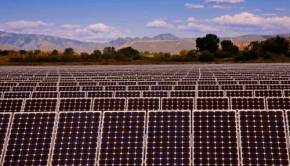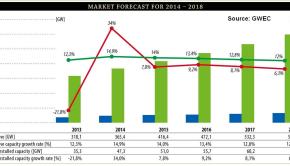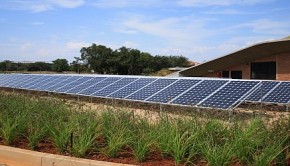India’s Wind Energy Capacity To Double In Five Years: GWEC
October 31st, 2014 by Mridul Chadha
Through the effective implementation of existing policies India’s wind energy capacity could double over the next five years, latest estimates of the Global Wind Energy Council (GWEC) show.
The recent re-introduction of a crucial tax incentive for wind energy project developers in addition to a generation-based financial incentive will help India push its installed wind energy to almost 50 GW by the end of this decade, Global Wind Energy Council (GWEC) has reported. By the end of next year the capacity is expected to reach 25 GW.
At 21.6 GW wind energy contributes about 67% to the total renewable energy capacity in India. During its peak growth period the Indian wind energy industry added 2.5-3 GW capacity every year. As per GWEC estimates the annual capacity addition could increase to 5 GW. The Indian government, however, has intentions to add 10 GW capacity every year over the next five years.
The government hopes to achieve this ambitious target by encouraging developers to set up projects in regions with comparatively low wind power potential. The government also announced plans to set up offshore wind energy projects following which leading wind energy solutions providers also announced plans to set up similar large-scale offshore projects.
The government also plans to launch the National Wind Energy Mission in the near-term. While the details of this mission are not known yet it could significantly boost India’s wind energy capacity. As per GWEC estimates, the installed wind energy capacity could reach 83 GW by 2030 under current existing policy scenario and can surpass 150 GW if more ambitious policies are implemented.
According to the Planning Commission of India, a low-carbon economic development plan would see a total of 700 GW installed power generation capacity by 2030. Considering GWEC estimates, at 154 GW wind energy would have a share of 22% in the installed capacity, second only to super-critical coal power technology.
Image Credit: wind turbines in India via Shutterstock
Keep up to date with all the hottest cleantech news by subscribing to our (free) cleantech newsletter, or keep an eye on sector-specific news by getting our (also free) solar energy newsletter, electric vehicle newsletter, or wind energy newsletter.
-
Paul
-
Larmion
-
http://zacharyshahan.com/ Zachary Shahan
-
Ronald Brakels
-
Bob_Wallace
-
-
-
Matt
-
http://zacharyshahan.com/ Zachary Shahan
-
http://twitter.com/mridul Mridul Chadha
-
-


























